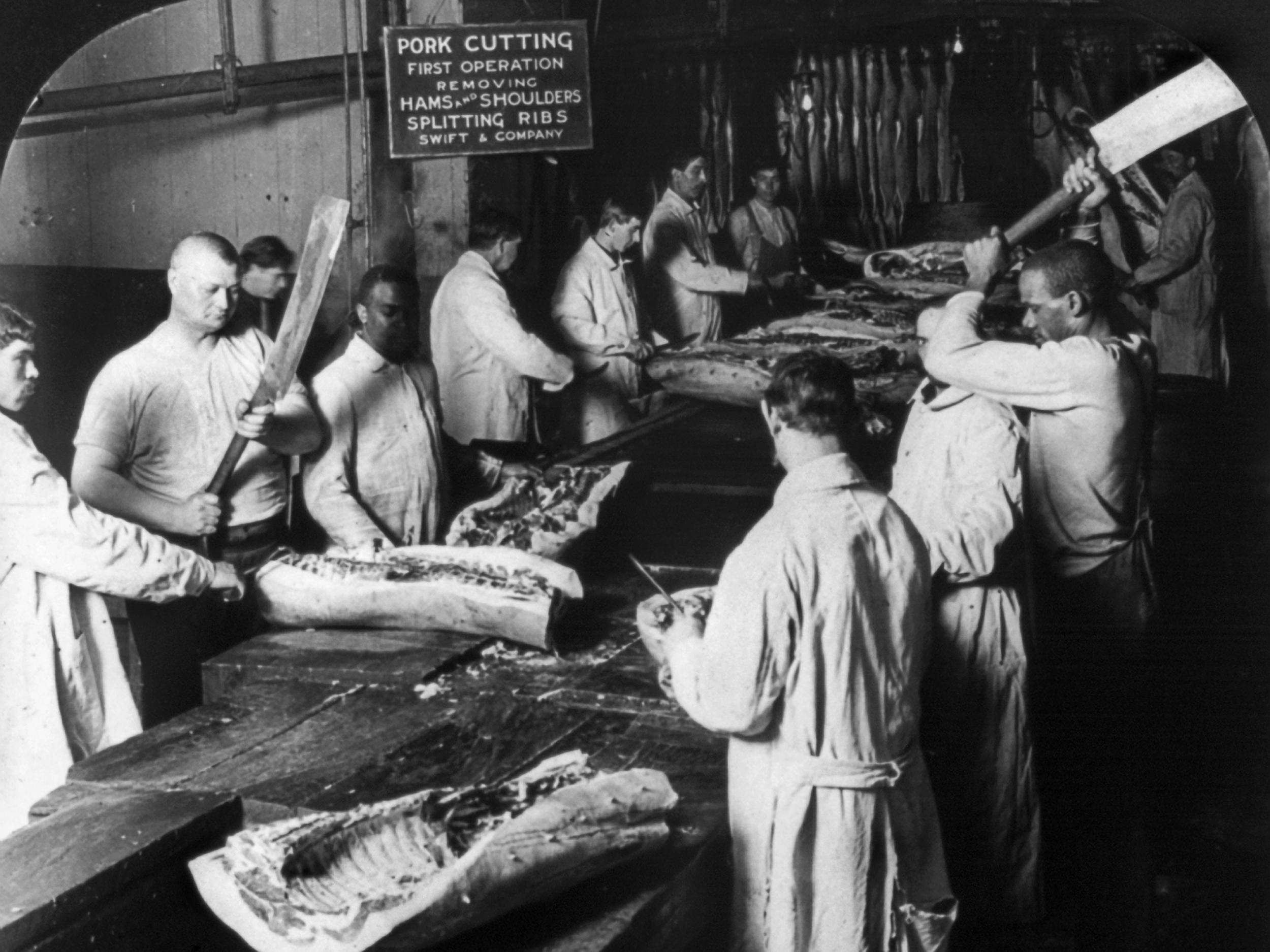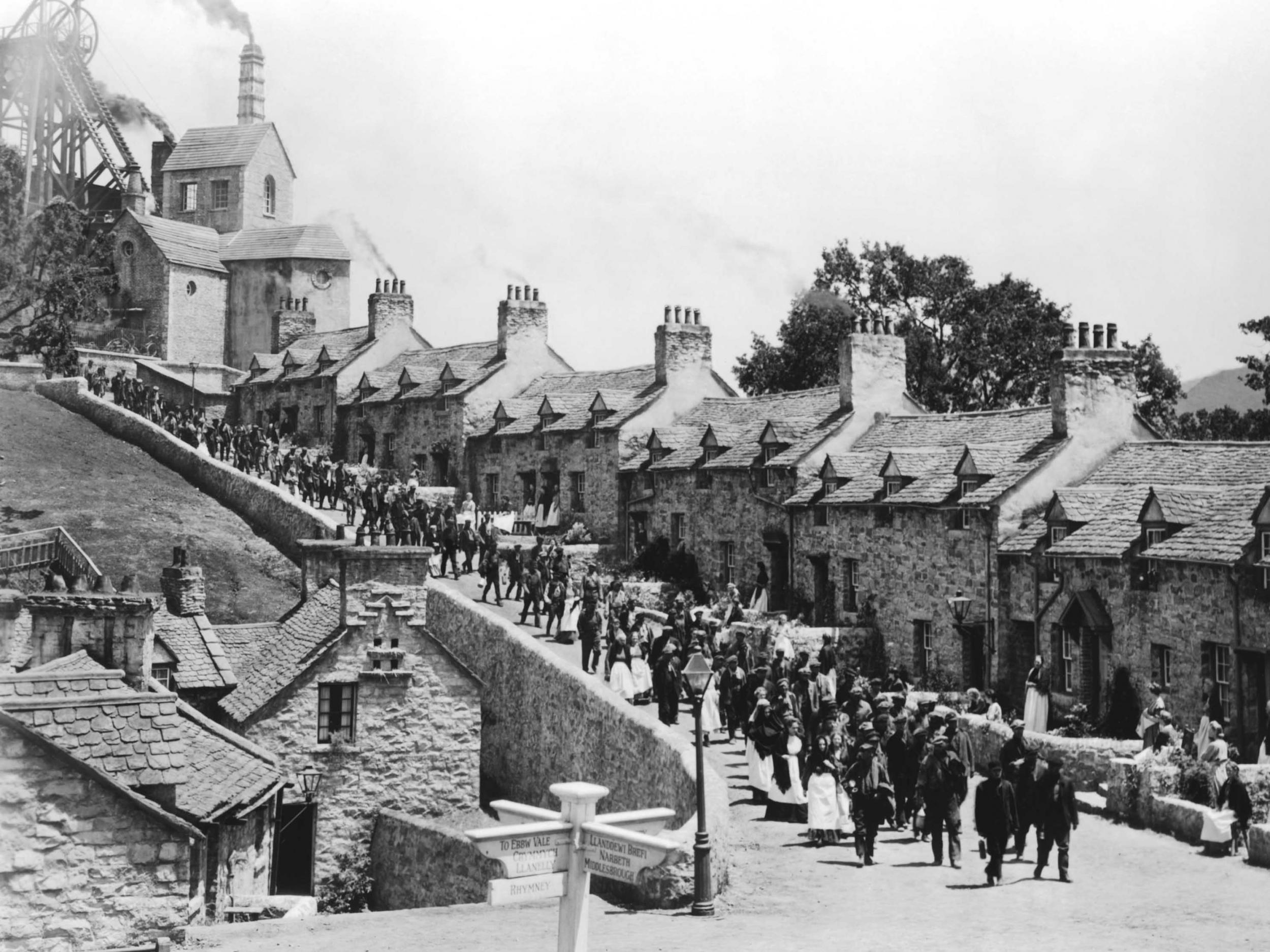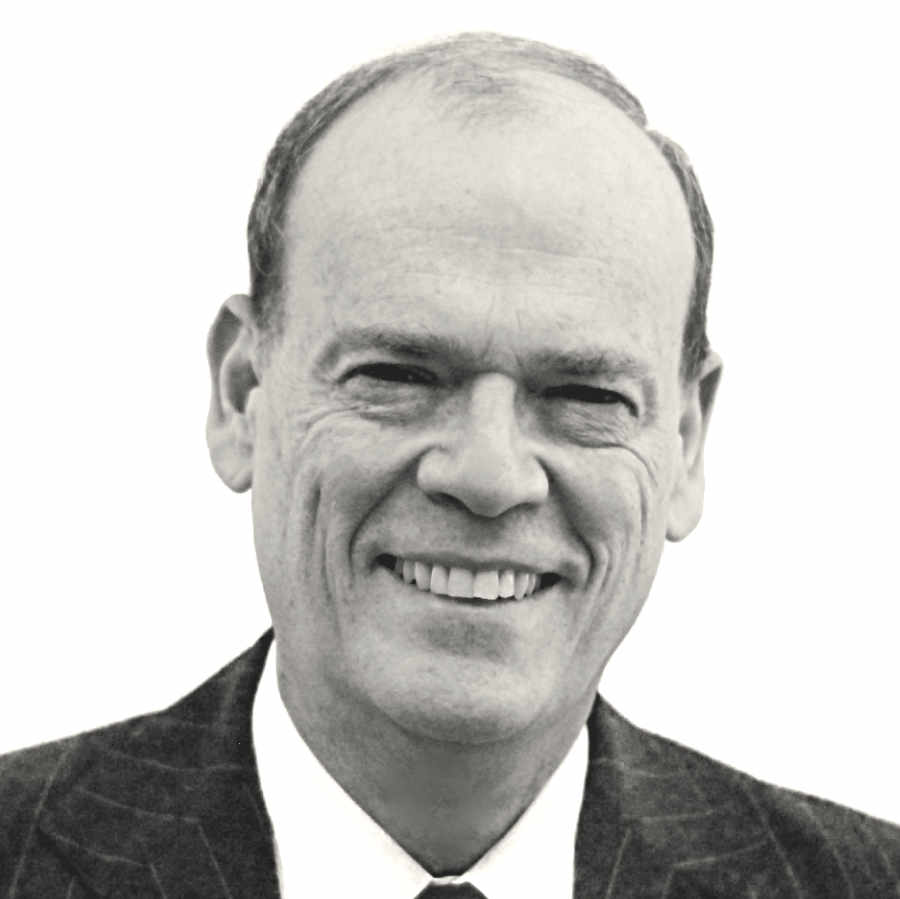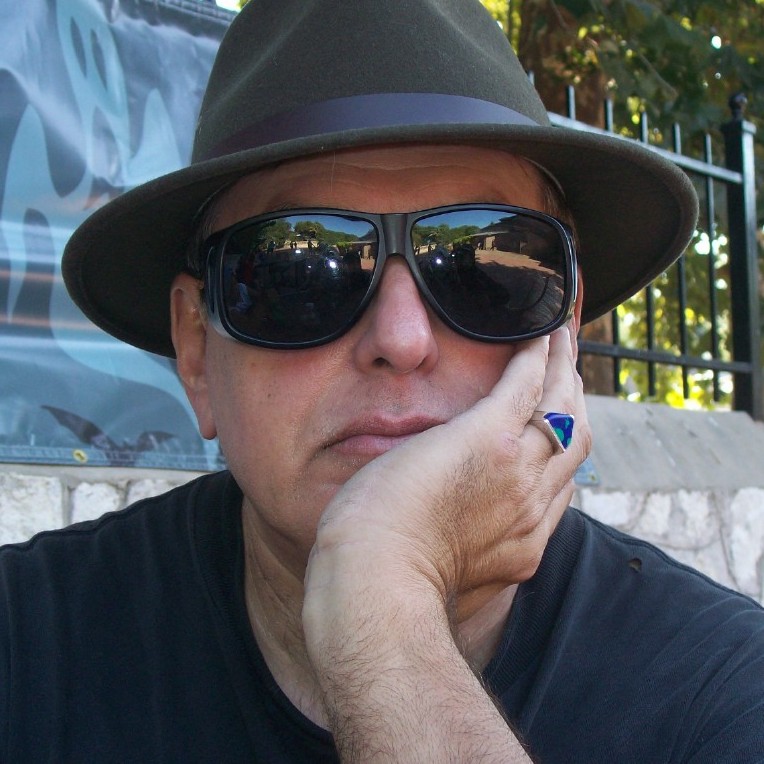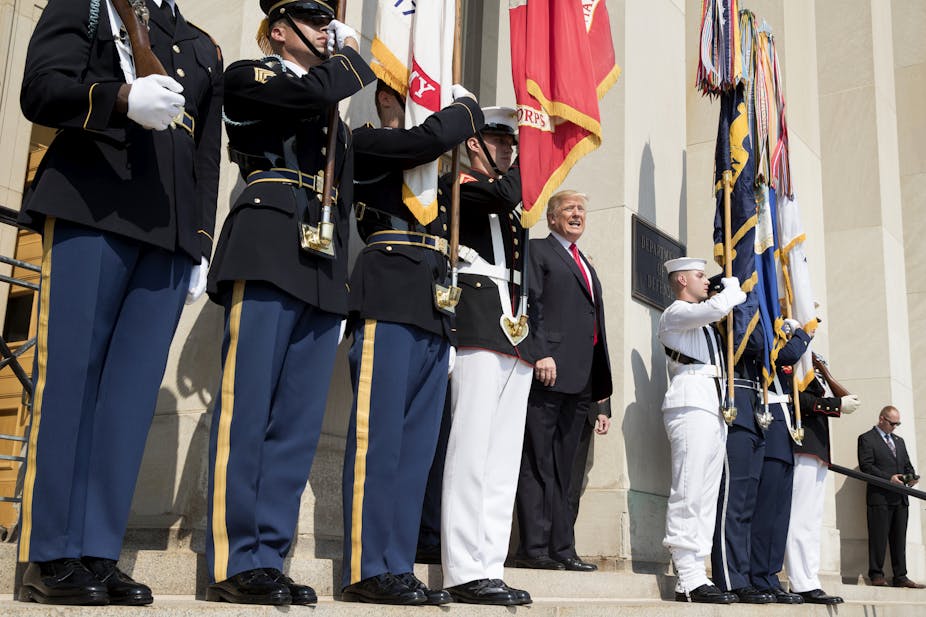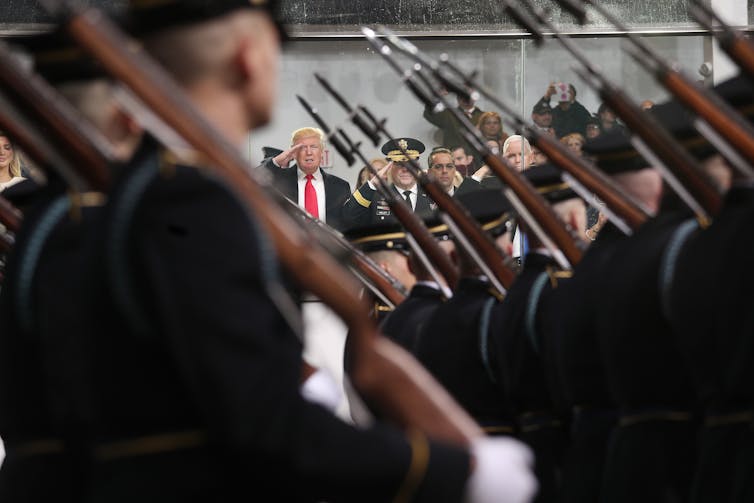ISSUE 46 - MARCH 2020 - COPIES
Many today ridicule prior generations’ concern over Communist
infiltration. But current trends are bringing that concern back into
focus.
Imagine the United States allying with Russia. If you were alive when Nazi Germany was rampaging across Europe during World War ii,
you didn’t have to imagine it. You saw it: The world’s greatest
capitalist nation forged a “strange alliance” with the world’s greatest
Communist state, the Soviet Union.
When this happened, a peculiar phenomenon surged across America: a wave of popular emotional fervor for the Soviets.
Influential men and media fawned over Joseph Stalin. President Franklin Roosevelt released Communist Party-U.S.A. leader Earl Browder from prison to promote “national unity” between American Communists and the general public.
Yet even during this trying and confusing time, one strong voice cried out a warning against not only the imminent fascist threat from Germany, but the less-understood Communist threat from the Soviet Union.
America emerged from World War ii victorious. It enjoyed economic, political and military dominance and assumed leadership of the free world. It was rivaled only by the Soviet Union.
But even at America’s pinnacle, Herbert W. Armstrong boldly warned that the nation would eventually be invaded by a revived Holy Roman Empire led by Germany. And before that, America’s rejection of God would allow communism to weaken the nation so that it could be invaded.
“Communism is a worldwide political movement, organized inside many countries,” Mr. Armstrong wrote in the April-May 1944 Plain Truth. “From official Communist literature anyone can learn, if he wishes to know the truth, that communism is a plan, in action, for the violent overthrow of capitalism and the capitalistic governments. And capitalism means democracy, since it is the democracies who control more than two thirds of the world’s capital.”
During and after the Second World War, Mr. Armstrong boldly proclaimed the biblical truth that Russia would not go to war with America militarily. However, he said, Russia would wage psychological warfare: propaganda, infiltration, subversion and demoralization. The Communist Russians would attack “our minds, our moral and spiritual values, rather than our bodies and our earthly possessions,” he said.
“What we fail to grasp, in the struggle with Russia, is this: We are not fighting a single nation in a military war, but a gigantic worldwide, plain-clothes army, masquerading as a political party, seeking to conquer the world with an entirely new kind of warfare,” Mr. Armstrong wrote in 1956. “It’s a kind of warfare we don’t understand, or know how to cope with. It uses every diabolical means to weaken us from within, sapping our strength, perverting our morals, sabotaging our educational system, wrecking our social structure, destroying our spiritual and religious life, weakening our industrial and economic power, demoralizing our armed forces, and finally, after such infiltration, overthrowing our government by force and violence! All this, cleverly disguised as a harmless political party! Communism is worldwide psychological warfare!”
In the 1940s and 1950s, many Americans found that warning to ring true. But as time went on, many dismissed it as a Communist scare that never quite appeared. By the new millennium, such a notion seemed outdated.
Today, however, many are starting to wonder what has happened to America and the West—and if this invisible Communist threat was real after all.
Mr. Armstrong never wavered. He exposed communism’s cultural incursion and told the world what the real threat to America was. Why was he so sure? Because his message didn’t come from popular opinion, statistical trends or covert intelligence. It came from the Bible.
Mr. Armstrong directed his readers and listeners to Scripture, which says that end-time Israel would become “mixed up” ideologically “with foreigners.” In particular, he pointed to Hosea 7:8-13 (Moffatt translation), which warns that Britain and America would “seek alliances with foreign nations, forsaking God”—foreign alliances that would “eat away” America’s strength “unknown to him” (ibid).
Was Mr. Armstrong right after all? Did this happen? Did communism infiltrate America? Did it cause America’s now-obvious decline from the inside out? Did the Bible prophesy that this would happen?
The First Stage of Subversion
Thirty-six years after Mr. Armstrong first warned American radio audiences about communism in 1934, kgb agent Yuri Bezmenov defected from the Soviet Union and eventually escaped to Canada. He warned America that it was at war with communism.When this happened, a peculiar phenomenon surged across America: a wave of popular emotional fervor for the Soviets.
Influential men and media fawned over Joseph Stalin. President Franklin Roosevelt released Communist Party-U.S.A. leader Earl Browder from prison to promote “national unity” between American Communists and the general public.
Yet even during this trying and confusing time, one strong voice cried out a warning against not only the imminent fascist threat from Germany, but the less-understood Communist threat from the Soviet Union.
America emerged from World War ii victorious. It enjoyed economic, political and military dominance and assumed leadership of the free world. It was rivaled only by the Soviet Union.
But even at America’s pinnacle, Herbert W. Armstrong boldly warned that the nation would eventually be invaded by a revived Holy Roman Empire led by Germany. And before that, America’s rejection of God would allow communism to weaken the nation so that it could be invaded.
“Communism is a worldwide political movement, organized inside many countries,” Mr. Armstrong wrote in the April-May 1944 Plain Truth. “From official Communist literature anyone can learn, if he wishes to know the truth, that communism is a plan, in action, for the violent overthrow of capitalism and the capitalistic governments. And capitalism means democracy, since it is the democracies who control more than two thirds of the world’s capital.”
During and after the Second World War, Mr. Armstrong boldly proclaimed the biblical truth that Russia would not go to war with America militarily. However, he said, Russia would wage psychological warfare: propaganda, infiltration, subversion and demoralization. The Communist Russians would attack “our minds, our moral and spiritual values, rather than our bodies and our earthly possessions,” he said.
“What we fail to grasp, in the struggle with Russia, is this: We are not fighting a single nation in a military war, but a gigantic worldwide, plain-clothes army, masquerading as a political party, seeking to conquer the world with an entirely new kind of warfare,” Mr. Armstrong wrote in 1956. “It’s a kind of warfare we don’t understand, or know how to cope with. It uses every diabolical means to weaken us from within, sapping our strength, perverting our morals, sabotaging our educational system, wrecking our social structure, destroying our spiritual and religious life, weakening our industrial and economic power, demoralizing our armed forces, and finally, after such infiltration, overthrowing our government by force and violence! All this, cleverly disguised as a harmless political party! Communism is worldwide psychological warfare!”
In the 1940s and 1950s, many Americans found that warning to ring true. But as time went on, many dismissed it as a Communist scare that never quite appeared. By the new millennium, such a notion seemed outdated.
Today, however, many are starting to wonder what has happened to America and the West—and if this invisible Communist threat was real after all.
Mr. Armstrong never wavered. He exposed communism’s cultural incursion and told the world what the real threat to America was. Why was he so sure? Because his message didn’t come from popular opinion, statistical trends or covert intelligence. It came from the Bible.
Mr. Armstrong directed his readers and listeners to Scripture, which says that end-time Israel would become “mixed up” ideologically “with foreigners.” In particular, he pointed to Hosea 7:8-13 (Moffatt translation), which warns that Britain and America would “seek alliances with foreign nations, forsaking God”—foreign alliances that would “eat away” America’s strength “unknown to him” (ibid).
Was Mr. Armstrong right after all? Did this happen? Did communism infiltrate America? Did it cause America’s now-obvious decline from the inside out? Did the Bible prophesy that this would happen?
The First Stage of Subversion
Bezmenov said that subverting foreign nations was so important to the kgb that most of its resources were allocated to it. “Only about 15 percent of time, money and manpower is spent on espionage as such,” he explained in an interview with G. Edward Griffin in 1985. “The other 85 percent is a slow process which we call either ideological subversion or ‘active measures.’”
Ideological subversion, Bezmenov said, is a long-term process involving four stages: 1) demoralization, 2) destabilization, 3) crisis and 4) normalization.
The first state, demoralization, is now an eerily familiar concept among Americans. Many who recognize it think it occurred accidentally, naturally or even fortunately. But former kgb agents, said Bezmenov, recognize it as an intentional ideological attack aimed to “change the perception of reality of every American to such an extent that despite the abundance of information, no one is able to come to sensible conclusions in the interest of defending themselves, their families, their community and their country.”
“It takes about 15 to 20 years to demoralize a nation,” Bezmenov wrote in his book, Love Letter to America. “Why that many (or few)? Simple: this is the minimum number of years needed to ‘educate’ one generation of students in a target country (America, for example) and expose them to the ideology of the subverter.”
Such Soviet reeducation methods took deep root in America during the 1960s and ’70s. Bezmenov warned that kgb agents and their socialistic “fellow travelers” would use abstract art, perverted music, pornographic images, homosexual rights, racist politics, pacifist foreign policy and socialist economics to demoralize America.
Whether you believe Bezmenov or not, you have to ask yourself: Does any of this sound familiar?

Corruption of Modern Education
After the collapse of the Soviet Union, Soviet archives revealed the Communist Party-u.s.a. (an organization that is still alive and well today) received $2 to $3 million a year from the Kremlin to further its subversion activities.
Most of the efforts of the Kremlin, the Communist Party-U.S.A. and their “fellow travelers” went not toward traditional espionage, but toward infiltrating American education. According to Bezmenov, the Soviets’ main methods of demoralization were: exchanging students with Moscow; flooding college campuses with Marxist literature; participating in international seminars; infiltrating universities with radical leftists (often unknowingly under the guidance of kgb subverters); establishing Communist-staffed news media; and organizing “study groups” to disseminate Communist propaganda.
“Before World War ii the Communist Party in the United States was making great headway,” Mr. Armstrong wrote in the April 1980 Plain Truth. “They began infiltrating the colleges and universities. If they could not ‘convert’ professors, they worked on students who would become teachers later. Thus they were recruiting teachers to teach their doctrine all over the United States.”
According to a former staff director of a Senate investigations subcommittee, in the years between 1935 and 1953, the Communist Party “enlisted the support of at least 3,500 professors—many of them as dues-paying members, many others as fellow travelers, some as out-and-out espionage agents, some as adherents of the party line in varying degrees, and some as the unwitting dupes of subversion” (J. B. Matthews, “Communism and the Colleges,” American Mercury, May 1953).
The ultimate goal of communism is a “utopian” society where every individual is completely reliant on society (as the Communist Party). This is why Marxist-Leninist education emphasizes “mass character” and “collectivism” over “individual abilities.” For a collectivist society to truly succeed, it needs more than just a generation of people who don’t want to support themselves: It needs a generation of people who cannot support themselves!
This is the direction America is going. In the words of Bezmenov, “The American romance with state-run education as encouraged by kgb subverters has already produced generations of graduates who cannot spell, cannot find Nicaragua on a world map, cannot think creatively and independently. I wonder if Albert Einstein would have arrived at his theory of relativity if he had been educated in one of today’s American public schools. Most likely he would have ‘discovered’ marijuana and variant methods of sexual intercourse instead.”
Wrecking the Economy
As Mr. Armstrong wrote, it is important to understand what communism is. It sees itself not as a mere alternative or competitor to capitalism, but as a global movement in harmony with the fact that human history revolves around the production of material. It renders culture, art, ethics, philosophy, religion, family and even the individual as secondary, superfluous or dangerous. After workers around the globe violently overthrow those who possess capital, the ideology purports, humanity will ultimately achieve this inevitable “utopian” future. The property—and everything else—pertaining to an individual will be abolished, and each person will simply become a cog in the giant, glorious machinery of the global utopian state.“Communism, of course, is many things,” Mr. Armstrong wrote in the February 1962 Plain Truth. “It is a doctrine. … It is a revolutionary program. It is relentless class war. It is a radical philosophy of history. It is a radical philosophy of society. It is a social system. It is an economic system. It is a political strategy. It is a world conspiracy.”
Go to Page # 7

The End of Cuba’s Entrepreneurship Boom
It isn’t just Trump who has put the country’s small businesses under pressure. Díaz-Canel is after them, too.
The closure of Scenius was part of a more adversarial approach to nonstate enterprise that the Cuban Communist Party has adopted the last two years, after almost a decade of private-sector development. The same month Larrea and his partners lost the cooperative, the government of Raúl Castro, Cuba’s then-president, froze the issuing of new licenses for the nation’s small business owners. The move put the brakes on 2011 policy guidelines that had sparked a sizable yet regulated private-sector boom, generating an estimated 18 percent of Cuba’s gross national income.
Castro left office in April 2018, but Cuba’s new president, Miguel Díaz-Canel, seems just as determined to decelerate the island’s economic opening. As U.S. tourism and trade recede, the Communist Party has in turn abandoned diplomatic goodwill and escalated its own private-sector crackdown, leaving small-business owners scrambling. Entrepreneurs are facing a two-front attack from a U.S. executive branch resistant to commercial and travel ties to the island, and from Cuban officials who have come to perceive the country’s small businesses less as partners in Cuba’s opening than as competition to state-owned firms.
Before the permit freeze, between early 2013 and 2017, Cuba had approved 439 nonagricultural cooperatives, authorizing these privately managed associations to provide construction, retail, transportation, and other key economic services for the first time in 50 years. Meanwhile, the number of Cuban entrepreneurs exploded by more than 37 percent, and nonstate businesses came to account for almost a third of national employment, according to government figures. The true increase was even more substantial, as thousands of Cubans not counted in official estimates also flocked to the private sector without licenses. U.S. tourism to Cuba soared from 92,000 to 618,000 annual visitors during the three-year detente, and by 2016, private businesses were raking in about one-third of the island’s annual tourism revenues, according to the Brookings Institution.
As U.S.-Cuban relations soured, so too did the Cuban government’s attitude toward the fledgling nonstate businesses. “We will take concrete steps to ensure that investments flow directly to the people, so they can open private businesses and begin to build their country’s great, great future,” Trump said in Miami during his June 2017 Cuba policy announcement. But tightening the U.S. embargo and travel controls has had the opposite effect. Though private guesthouses, boutique hotels, restaurants, and bars had multiplied to absorb the unexpected tourism deluge, once U.S. travel restrictions were back on the books, the inflow of visitors seemed likely to decline. The Cuban government backpedaled, stalling the country’s economic liberalization.
Ultimately, Larrea’s cooperative got caught in the policy turnaround. He believes the Cuban government viewed his organization’s success as a “strong threat” to the state-run economy. “Economically, we were demonstrating that there was another way of doing things … that the private sector is more efficient than the state sector,” he said.
Things grew even worse for business owners like Larrea in July 2018, when Díaz-Canel hiked up performance standards, penalties, fines, and red tape for the country’s estimated 580,000 entrepreneurs. His administration also expanded the discretionary powers of executive agencies to inspect, punish, and curtail Cuban entrepreneurship.
Tourists visit La Clandestina, a private shop in Havana, on
March 28, 2018. Entrepreneurs known as cuentapropistas and their
employees represent 12 percent of the country’s work force—some 580,000
Cubans. YAMIL LAGE/AFP/Getty Images
The good times didn’t last. In June 2017, U.S. President Donald Trump curtailed Cuba-bound travel and banned U.S. commerce with enterprises owned by the Cuban military. Later that summer, Cuban authorities abruptly shut down the thriving cooperative.
The closure was prompted by the government’s accusation that Scenius had provided unauthorized financial services. Larrea believes the charges are baseless. In the fall of 2017, the association sued the Ministry of Finance, the regulatory body that ordered the shutdown, and drew up an appeal that was eventually rejected. “When we asked to see the ruling in writing, they denied our request. They barely answered us. It became clear that it was fundamentally a political issue,” Larrea said.
The closure of Scenius was part of a more adversarial approach to nonstate enterprise that the Cuban Communist Party has adopted the last two years, after almost a decade of private-sector development. The same month Larrea and his partners lost the cooperative, the government of Raúl Castro, Cuba’s then-president, froze the issuing of new licenses for the nation’s small business owners. The move put the brakes on 2011 policy guidelines that had sparked a sizable yet regulated private-sector boom, generating an estimated 18 percent of Cuba’s gross national income.
Castro left office in April 2018, but Cuba’s new president, Miguel Díaz-Canel, seems just as determined to decelerate the island’s economic opening. As U.S. tourism and trade recede, the Communist Party has in turn abandoned diplomatic goodwill and escalated its own private-sector crackdown, leaving small-business owners scrambling. Entrepreneurs are facing a two-front attack from a U.S. executive branch resistant to commercial and travel ties to the island, and from Cuban officials who have come to perceive the country’s small businesses less as partners in Cuba’s opening than as competition to state-owned firms.
Before the permit freeze, between early 2013 and 2017, Cuba had approved 439 nonagricultural cooperatives, authorizing these privately managed associations to provide construction, retail, transportation, and other key economic services for the first time in 50 years. Meanwhile, the number of Cuban entrepreneurs exploded by more than 37 percent, and nonstate businesses came to account for almost a third of national employment, according to government figures. The true increase was even more substantial, as thousands of Cubans not counted in official estimates also flocked to the private sector without licenses. U.S. tourism to Cuba soared from 92,000 to 618,000 annual visitors during the three-year detente, and by 2016, private businesses were raking in about one-third of the island’s annual tourism revenues, according to the Brookings Institution.
As U.S.-Cuban relations soured, so too did the Cuban government’s attitude toward the fledgling nonstate businesses. “We will take concrete steps to ensure that investments flow directly to the people, so they can open private businesses and begin to build their country’s great, great future,” Trump said in Miami during his June 2017 Cuba policy announcement. But tightening the U.S. embargo and travel controls has had the opposite effect. Though private guesthouses, boutique hotels, restaurants, and bars had multiplied to absorb the unexpected tourism deluge, once U.S. travel restrictions were back on the books, the inflow of visitors seemed likely to decline. The Cuban government backpedaled, stalling the country’s economic liberalization.
Ultimately, Larrea’s cooperative got caught in the policy turnaround. He believes the Cuban government viewed his organization’s success as a “strong threat” to the state-run economy. “Economically, we were demonstrating that there was another way of doing things … that the private sector is more efficient than the state sector,” he said.
Things grew even worse for business owners like Larrea in July 2018, when Díaz-Canel hiked up performance standards, penalties, fines, and red tape for the country’s estimated 580,000 entrepreneurs. His administration also expanded the discretionary powers of executive agencies to inspect, punish, and curtail Cuban entrepreneurship.
Wrecking the Economy
Mr. Armstrong also warned of this infiltration of America. In a 1980 edition of the Worldwide News, he wrote, “I was saying over the air, and writing, back in 1934, that the Communist[s’] unwavering strategy was, as a first offensive toward world domination, propaganda. They began sowing the seeds of their Communist atheistic education all over the United States—especially among college professors and students.”
“They invaded American university campuses, full force,” he continued, “and the U.S. universities trustingly let them in.”
In
practice, communism has never been the grassroots movement Karl Marx
predicted. It has been driven by small groups of intellectuals and
elites who seize power. Hence the targeting of the American
intelligentsia—present and future.
Mr. Armstrong understood
this—and he saw a much bigger picture. He warned that demoralization
tactics originated from a source beyond Marx, the kgb or the Soviet Union. That warning also explains the effectiveness of the demoralization process: “Communism is the devil’s
effort, through his demon-inspired human tools, to take from us this
greatest national and economic blessing God ever conferred on any
people,” he wrote in 1949.
Even though the Soviet Union fell
before it could take advantage of the “destabilization” and “crisis”
stages of its subversion, the demoralization virus it had inflicted
continued to multiply inside its host. Something much more powerful was
at work here than Soviet initiatives. Something more powerful than even
communism itself.

FROM PAGE # 6
Corruption of Modern Education
As an economic system, communism pits the larger, poorer groups against the smaller, more wealthy groups. It calls for that wealth to be removed from those who have it and spread evenly among everyone. To accomplish this re-distribution of wealth, Karl Marx and Friedrich Engels wrote in The Communist Manifesto that private land ownership must be abolished, a heavily progressive income tax must be instituted, and all factories and financial institutions must be nationalized.
Regarding the troublesome matter of people (both wealthy and poor) who resist the program, Marx favored violence over reform. The only way to speed the march to his new society was “revolutionary terror,” he wrote.
The mantra of Marxist economics is: “From each according to his ability, to each according to his need.” The value produced by those with more “ability” must be redistributed to those with more “need.” This philosophy directly contradicts Jesus Christ’s teaching, represented in the parable of the pounds (Luke 19:12-27), in which each of Christ’s servants is rewarded differently based on how much he actually produced with what he was given.
The main reason Marxism doesn’t work is that when human beings don’t receive the full benefits of their labor, they lack incentive to work. The Soviet Union fell because of Russia’s enthusiastic embrace of Marxist-Leninist economics. As Russian economist Grigory Yavlinsky, an adviser to Soviet President Mikhail Gorbachev, once said: “The Soviet system is not working because the workers are not working.”
Despite the economic disaster that befell the Soviet Union, and the consistent failures of economies that follow Communist ideals, a shocking number of American economists still cling to the socialist movement and Marxist thought.
Communism has survived. And despite the cautionary plight of tens of millions who have recently suffered and died under Communist regimes, it has thrived—even inside the government of its sworn enemy, the United States. America’s current political environment exalts many Communist ideals. There is even compelling evidence connecting the current president to some of the biggest names in America’s Communist history.
Herbert Armstrong warned that Communist economics would sap America’s strength and weaken its economic power. “Satan is not a visible red devil with tail, horns and a pitchfork,” he wrote in the October 1951 Plain Truth. “The real Satan is invisible. The world doesn’t see him or recognize his works. … It doesn’t grasp the diabolical deception of communism—Satan’s economic delusion, employing propaganda based on false economies as its first arm of attack ….”

How Education Shaped Communist Cuba

F is for Fidel, Y is for Yanqui.
This mantra used for teaching the alphabet in revolutionary Cuba shows
just how far its educational divide with the U.S. has stretched. No
sector illustrates better how Cuba and the U.S. have grown apart in over
50 years than education. Cuba claims today that its academic standards
are among the highest in the world, and the country has educated tens of
thousands of foreign students, mostly in medicine. U.S. policymakers
know little about the methods used in Cuban education, nor what
practical opportunities for collaboration in research and business might
exist. With the agreement the two countries made last December to
restore diplomatic relations, that may be about to change.
The U.S. and Cuba built strong links in education over the span of more
than 50 years after the island’s independence from Spain in 1902. The
first American football game played by the University of Miami in 1926
was against the University of Havana. Ruston Academy, founded in Havana
by Americans in 1920, became a model international school among the U.S.
expat community and prominent Cuban families. Fidel and Raul Castro for
their parts both attended elite Catholic schools, first in Santiago
then at Havana’s Colegio de Belén. Raul Castro’s wife, Vilma Espin—whose
father was a senior official with Bacardi—attended MIT in the 1950s. In
1959 the number of Americans expats in Cuba was not enormous, probably
under 50,000; only 6,500 Americans were formally registered as residents
of Cuba but many more came back and forth. Still, Cuban and U.S.
culture—jazz, baseball, Coca-Cola, Chevrolets—were in regular
interaction.
Cuban education had been a major subject of political
debate in Cuba before the revolution. The 1940 constitution enacted
under Fulgencio Batista included a requirement that the Ministry of
Education should take the largest share of the government’s budget,
except in cases of emergency. And the same constitution provided for
compulsory primary education between the ages of 6 through 14. Yet in
1953, the year of the last full census that was taken before the
Revolution, only 44 percent of children in these age groups were in
school. The absentee figures were much higher in the rural areas. Cuba
was not, of course, exceptional for these times. In the 1950s, though
Cuba had an overall illiteracy rate of 23 percent (with 53 percent in
rural areas), this was good for Latin America. Cuba’s secondary-school
attendance was relatively high as well. In 1953, 12 percent of those
between the ages of 15 and 19 were in school, a very high figure for the
region. And 20,000 Cubans were enrolled in universities. But standards
varied, and affluent parents often chose to pay to send their kids to
private schools; these school inequalities mirrored those across Cuba
during that time.
So
the scene was set for Fidel Castro to select education as a major issue
for his revolution. He had mentioned plans to raise teachers’ salaries
and improve rural schools briefly in the manifesto of his revolution,
but once in power it was clear that he saw education as having a pivotal
role in consolidating his revolution. Under Fidel Castro, education
became universal—but he also stipulated that anyone who received this
education would have to actively promote government policies both during
and after their schooling. They would also be required to take
government-approved courses that didn’t tolerate any criticism of
socialism as a way of life. In other words, education was seen as key to
the revolution taking hold and creating a literate population loyal to
the government.
* * *
The
Cuban government’s illiteracy campaign was an early example of
mobilization—the revolution hitting the ground running. Many of the
enlisted teachers were themselves high-school students. By 1961, when
the literacy campaign was at its height, Fidel Castro began closing all
private schools, many of which were run by the Catholic Church. This
followed the breaking of diplomatic relations with the U.S. and the
seizure of American commercial and residential property. The
battleground with the U.S. therefore had an early educational focus. And
it provoked the first wave of Cuban exiles, those who did not like the
direction the revolution was taking. The so-called "Pedro Pan" flights
brought to America school-age children whose parents preferred exile in
the U.S. to indoctrination. Many educators from the old regime followed,
prompting a teacher shortage on the island. The Colegio de Belén, which
the Castros had attended, was reestablished in Miami.
The Plot to Abolish the Family
Perhaps the most diabolical of these means is the Marxist plot to destroy the family. The Communist Manifesto calls the family a capitalist institution based “on private gain.” Marriage, it says, is but the “hypocritical” concealment of private prostitution. The authors hoped and predicted that both “bourgeois family” and “bourgeois marriage” would disappear with the vanishing of private capital.
Throughout the 1960s and into the ’70s, Soviet front groups worked throughout America to destroy marriage. Federal Bureau of Investigation informant Larry Grathwohl penetrated the revolutionary Communist group Weather Underground. After palling around with Bill Ayers, Bernardine Dohrn and their crew for months, Grathwohl wrote his report, “Bringing Down America: An fbi Informer With the Weathermen.” The report revealed that the Weather Underground network was determined to abolish monogamous marriage, which they viewed as a repressive remnant of male and white supremacy.
In Karl Marx’s words: “Communism abolishes eternal truths, it abolishes all religion, and all morality, instead of constituting them on a new basis; it therefore acts in contradiction to all past historical experience.”
Or, in Herbert W. Armstrong’s words, “Communism is the vulture of decadent, dying politics, religion, and society” (Plain Truth subscriber letter, Nov. 24, 1967).
Mr. Armstrong elaborated in a 1979 World Tomorrow television broadcast where he again reiterated the biblical truth that Satan actively and invisibly rules the world (2 Corinthians 4:4; Ephesians 2:2). He then quoted a statement by Jesus Christ that becomes very troubling in the light of American society in 2014. “If the United States gets divided too much between the idea of freedom and the idea of communism,” he said, “this country could not stand.”
America may not have replaced the stars on its flag with hammers and sickles, but it is by now undeniable that it is divided between the idea of freedom and that of communism. The American people long ago rejected God and allowed Satan-inspired Communist philosophy to infiltrate, subvert and divide the nation. God will allow this experience to teach America the natural consequences of broken law.
Talk of equality sounds noble, but as Mr. Armstrong warned, the Communist version of “equality” is only a means to an end. “As fostered by the Soviet Union,” he wrote in 1949, “communism is launched as a worldwide class struggle, pitting the poorer class against those who have been economically more successful, arousing class prejudice, stirring up race hatreds. While they pretend to stand for peace, they engender only strife, and they feed like a vulture on poverty, discontent, discouragement, confusion and chaos.”
He warned, “Communism is the devil’s effort, through his demon-inspired human tools, to take from us this greatest national and economic blessing God ever conferred on any people.”
Looking at America today, you have to admit that Mr. Armstrong was right.









